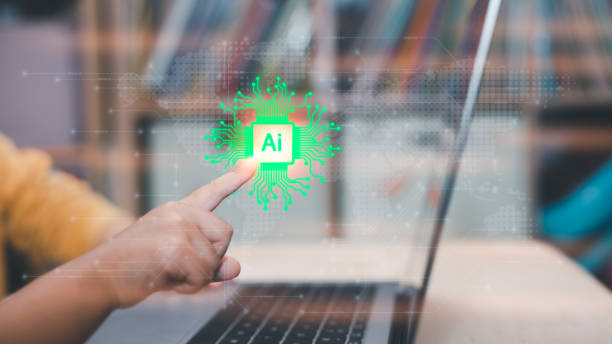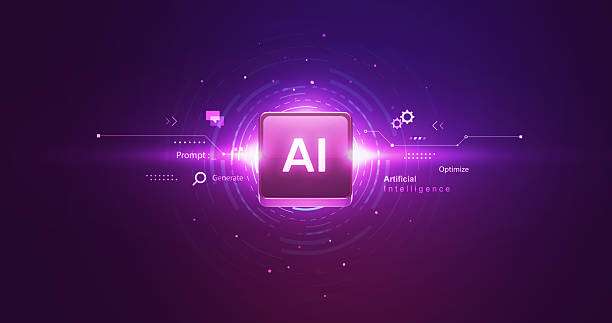What is an Artificial Intelligence Robot? A Comprehensive Definition

#What is an_Artificial_Intelligence_Robot? This is a question that lingers in the minds of many.
In short, an artificial intelligence robot is a combination of two fundamental concepts: #Robotics and #Artificial_Intelligence.
Robotics deals with the design, construction, operation, and application of robots.
Artificial Intelligence (AI) is a branch of computer science that aims to create machines that can perform tasks that usually require human intelligence, such as learning, problem-solving, and decision-making.
Therefore, an artificial intelligence robot is a device that, using artificial intelligence algorithms, is capable of performing tasks automatically and intelligently.
These robots can operate in different environments and make appropriate decisions using sensors and received data.
There are different types of artificial intelligence robots, from industrial robots used in factory production lines to software robots (chatbots) used in online customer service.
Artificial intelligence robots, utilizing techniques such as machine learning, natural language processing, and computer vision, are able to understand the environment, interact with humans, and perform complex tasks.
The main goal of developing artificial intelligence robots is to increase efficiency, accuracy, and speed in performing tasks, reduce costs and human risks, and provide innovative solutions for various challenges.
These robots are rapidly advancing and are expected to play a more important role in the future.
Is your online sales not what you expect? With Rasaweb, solve the problem of low sales and poor user experience forever!
✅ Increase the conversion rate of visitors to customers
✅ Create a pleasant user experience and increase customer trust
⚡ Take action now to receive free consultation!
What are the Main Components of an Artificial Intelligence Robot?
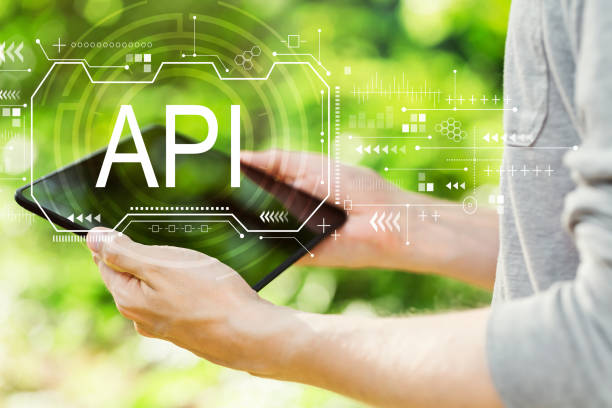
An artificial intelligence robot consists of several main components, each of which plays an important role in its overall performance.
These components include the following: 1.
**Sensors**: Sensors are responsible for collecting information from the surrounding environment.
This information can include images, sounds, temperature, pressure, and other sensory data.
Sensors help the robot understand the environment and make decisions based on it.
2.
**Processor**: The processor, or the brain of the robot, is responsible for processing information received from the sensors and executing artificial intelligence algorithms.
The processor can be a computer or a microcontroller.
3.
**Artificial Intelligence Software**: Artificial intelligence software includes algorithms and machine learning models that allow the robot to learn, reason, and decide.
This software can include neural networks, decision trees, and other artificial intelligence techniques.
4.
**Actuators**: Actuators are responsible for performing physical actions.
These actions can include moving, grabbing objects, speaking, and other physical activities.
Actuators help the robot interact with the environment.
5.
**Power Supply**: The power supply provides the energy required for the robot to function.
This source can be a battery, a power source, or other energy sources.
6.
**Body and Structure**: The body and structure of the robot hold the various components together and protect them.
The robot’s body can be made of various materials such as metal, plastic, or composite materials.
These components, working together, enable an artificial intelligence robot to perform various tasks automatically and intelligently.
Applications of Artificial Intelligence Robots in Various Industries

Artificial intelligence robots have extensive applications in various industries and are increasingly expanding.
In the manufacturing industry, artificial intelligence robots are used to automate production lines, perform quality inspections, and package products.
These robots can work with higher accuracy and speed than humans and reduce production costs.
In the healthcare industry, artificial intelligence robots are used to assist surgeons in performing complex surgeries, provide nursing care, and diagnose diseases.
These robots can operate with higher precision and delicacy and reduce the risks associated with human errors.
In the customer service industry, software robots (chatbots) are used to answer customer questions, provide technical support, and conduct financial transactions.
These robots can be available 24 hours a day and answer customer questions quickly.
In the transportation industry, artificial intelligence robots are used to drive self-driving cars, deliver goods, and manage traffic.
These robots can drive with greater safety and efficiency and reduce traffic.
In addition to these industries, artificial intelligence robots have numerous applications in other industries such as agriculture, mining, energy, and education.
These robots can help increase productivity, reduce costs, and improve the quality of life.
Artificial intelligence robots are transforming various industries and are expected to play a more important role in the future.
| Industry | Applications |
|---|---|
| Manufacturing | Automation of production lines, quality inspection, packaging |
| Healthcare | Assisting surgeons, nursing care, disease diagnosis |
| Customer Service | Answering questions, technical support, financial transactions |
| Transportation | Self-driving cars, delivery of goods, traffic management |
Machine Learning and its Role in Artificial Intelligence Robots

Machine Learning is one of the most important artificial intelligence techniques that plays a very important role in the performance of artificial intelligence robots.
Machine learning allows robots to learn from data and improve their performance without explicit programming.
In other words, using machine learning algorithms, robots can identify patterns and relationships in data and make decisions based on them.
There are different types of machine learning algorithms, each suitable for a specific type of task.
Some of these algorithms are: 1.
**Supervised Learning**: In this type of learning, the robot is trained using labeled data (data for which the correct answer is known).
2.
**Unsupervised Learning**: In this type of learning, the robot is trained using unlabeled data and must automatically identify patterns and structures in the data.
3.
**Reinforcement Learning**: In this type of learning, the robot is trained using trial and error and learns how to make the best decisions by receiving rewards or penalties.
Machine learning helps artificial intelligence robots perform complex tasks with greater accuracy and efficiency and operate in dynamic and unpredictable environments.
For example, an artificial intelligence robot designed to diagnose diseases can learn from patients’ medical data (such as radiology images and test results) using machine learning algorithms and diagnose diseases with greater accuracy.
In general, machine learning is one of the key factors in the advancement and development of artificial intelligence robots and will play an important role in the future of this technology.
Are you tired of your company’s website not being seen as it should be, and losing potential customers? Solve this problem forever with professional and effective website design by Rasaweb!
✅ Increase brand credibility and build customer trust
✅ Attract targeted sales leads
⚡ Contact us now for a free consultation!
Challenges in the Development of Artificial Intelligence Robots
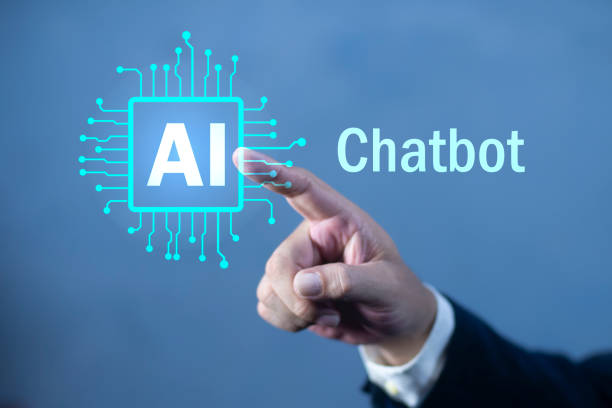
The development of artificial intelligence robots faces several challenges, some of which are: 1.
**Complexity of Algorithms**: Artificial intelligence algorithms are very complex and their development and implementation require high expertise and technical knowledge.
2.
**Need for Large Amounts of Data**: Machine learning algorithms need large and diverse amounts of data to train and improve their performance.
Collecting and preparing this data can be time-consuming and costly.
3.
**Ethical Issues**: The use of artificial intelligence robots can raise various ethical issues, such as discrimination, violation of privacy, and job losses.
4.
**Security**: Artificial intelligence robots can be the target of cyber attacks and be misused.
5.
**High Cost**: The development and maintenance of artificial intelligence robots can be very costly.
6.
**Hardware Limitations**: The hardware used in artificial intelligence robots must have high processing power and low energy consumption.
7.
**Reliability**: Artificial intelligence robots must be reliable and safe and function correctly in different conditions.
8.
**Human Interaction**: Artificial intelligence robots must be able to interact with humans naturally and effectively.
9.
**Regulation**: It is necessary to develop appropriate laws and regulations for the use of artificial intelligence robots.
10.
**Public Acceptance**: Public acceptance of this technology is essential for the success of artificial intelligence robots.
Addressing these challenges requires the joint efforts of researchers, industrialists, policymakers, and society.
What will the Future of Artificial Intelligence Robots be?
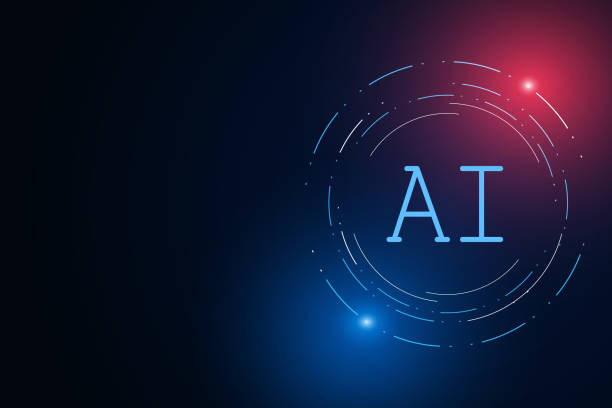
The future of artificial intelligence robots is very bright and full of potential.
With the increasing advancement of technology, artificial intelligence robots are expected to play a more important role in our lives in the future.
Some of the key trends that we will see in the future of artificial intelligence robots are: 1.
**Increasing Capabilities of Robots**: Artificial intelligence robots will be able to perform more complex tasks and operate in more diverse environments in the future.
2.
**Cost Reduction**: With the advancement of technology and increased production, the costs of developing and maintaining artificial intelligence robots will decrease.
3.
**Expanding Applications**: Artificial intelligence robots will have applications in various industries and fields in the future, including healthcare, education, transportation, agriculture, and manufacturing.
4.
**Improving Human Interaction**: Artificial intelligence robots will be able to interact with humans more naturally and effectively in the future.
5.
**Increasing Independence**: Artificial intelligence robots will be able to make their own decisions independently and operate without human intervention in the future.
6.
**Development of Software Robots**: Software robots (chatbots) will play a more important role in customer service, marketing, and other fields in the future.
7.
**Creating New Jobs**: The development and maintenance of artificial intelligence robots will create new jobs.
8.
**Ethical Issues**: With the increasing use of artificial intelligence robots, ethical issues related to this technology will become more important.
In general, artificial intelligence robots are transforming our world and are expected to play a more important role in our lives in the future.
The Impact of Artificial Intelligence Robots on the Labor Market
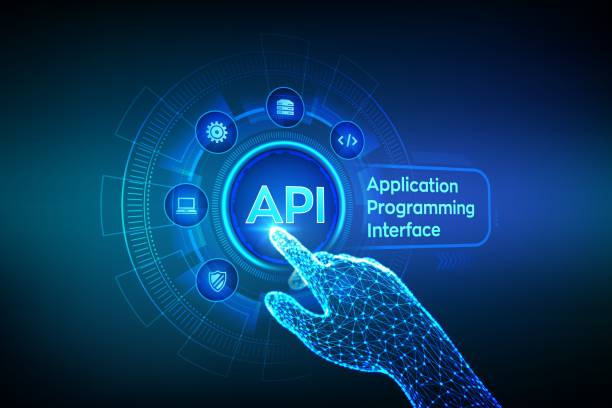
The impact of artificial intelligence robots on the labor market is a complex and controversial issue.
On the one hand, artificial intelligence robots can increase productivity and efficiency and reduce costs by automating repetitive and high-risk tasks.
This can lead to increased profitability for companies and create new opportunities for economic growth.
On the other hand, artificial intelligence robots can lead to job losses by replacing human labor, especially in jobs that require fewer skills.
This can lead to increased unemployment and social inequality.
However, some experts believe that artificial intelligence robots not only eliminate jobs but also create new ones.
These jobs can be created in areas such as the development, maintenance, and repair of robots, training and consulting, as well as in areas that require human skills such as creativity, critical thinking, and emotional intelligence.
In order to benefit from the advantages of artificial intelligence robots in the labor market and prevent their negative effects, we must take actions such as training and retraining the workforce, investing in research and development, and developing appropriate policies to support vulnerable individuals.
We must also pay attention to the ethical issues related to the use of artificial intelligence robots and develop laws to prevent discrimination and misuse of this technology.
| Aspect | Impacts |
|---|---|
| Productivity | Increase |
| Costs | Reduction |
| Jobs | Creation and Loss |
| Skills | Change in Needs |
Artificial Intelligence Robots and Privacy: Challenges and Solutions
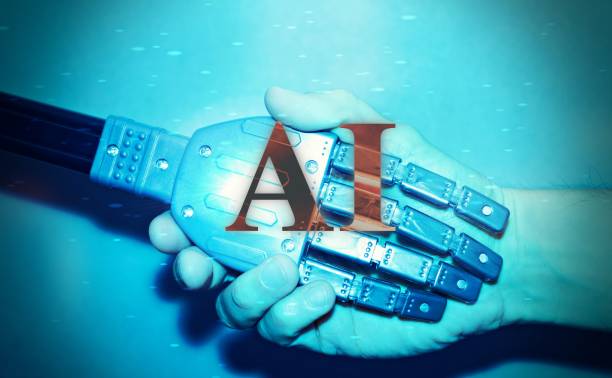
The use of artificial intelligence robots can create serious challenges for the privacy of individuals.
Artificial intelligence robots can collect, process, and store individuals’ personal information and use this information for various purposes such as advertising, monitoring, and control.
This can lead to a violation of individuals’ privacy and misuse of their information.
To address these challenges, we must take actions such as developing appropriate laws and regulations to protect privacy, developing privacy-preserving technologies, and educating and raising awareness among individuals about their privacy rights.
We must also pay attention to the ethical issues related to the use of artificial intelligence robots and develop laws to prevent discrimination and misuse of this technology.
Artificial intelligence robots and cybersecurity are also two related topics.
Artificial intelligence robots can be the target of cyber attacks and be misused.
To prevent this from happening, we must take actions such as developing strong security systems, educating and raising awareness among individuals about cyber threats, and international cooperation to combat cybercrime.
Did you know that 85% of customers check your company’s website before any interaction?
With Rasaweb, build a corporate website that deserves your credibility.
✅ Increase credibility and customer trust
✅ Attract high-quality leads
⚡ Get a free website design consultation
Artificial Intelligence Robots in Iran: Opportunities and Challenges
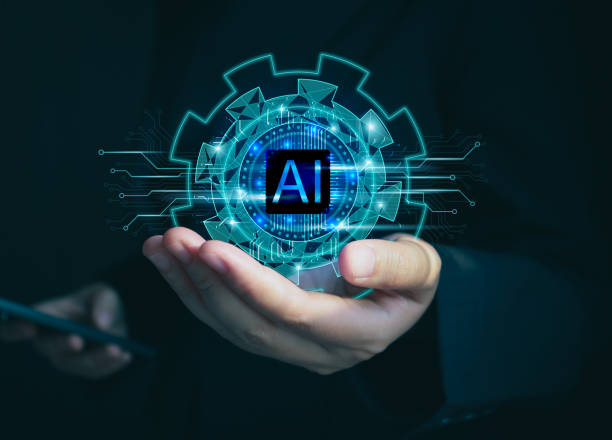
The development of artificial intelligence robots in Iran provides many opportunities for economic growth and technological development.
Iran has a skilled and talented workforce in the fields of artificial intelligence and robotics and can become one of the leading countries in this technology by investing in these areas.
Some of the key opportunities for the development of artificial intelligence robots in Iran are: 1.
**Increasing Productivity in Various Industries**: Artificial intelligence robots can increase productivity and efficiency in various industries by automating repetitive and high-risk tasks.
2.
**Creating New Jobs**: The development and maintenance of artificial intelligence robots will create new jobs.
3.
**Solving Social Problems**: Artificial intelligence robots can be used to solve social problems such as traffic, air pollution, and water resource management.
4.
**Improving Education and Health**: Artificial intelligence robots can be used to improve education and health in deprived and remote areas.
5.
**Developing Defense Industries**: Artificial intelligence robots can be used to develop defense industries and increase national security.
However, the development of artificial intelligence robots in Iran also faces challenges, such as lack of investment, weak infrastructure, and lack of appropriate laws and regulations.
To address these challenges, we must take actions such as attracting investment, developing infrastructure, and developing appropriate laws and regulations.
Key Tips for Learning and Entering the World of Artificial Intelligence Robots
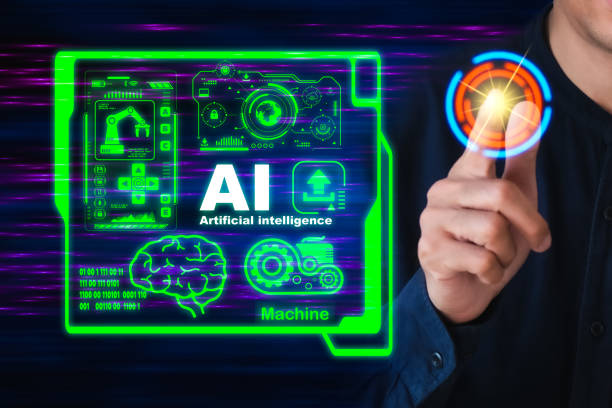
If you are interested in learning and entering the world of artificial intelligence robots, the following tips may be helpful to you: 1.
**Learning the Basics of Artificial Intelligence**: To start, you need to learn the basics of artificial intelligence such as machine learning, natural language processing, and computer vision.
2.
**Familiarity with Robotics**: You should become familiar with the principles of robotics such as designing, building, and controlling robots.
3.
**Learning Programming Languages**: To work with artificial intelligence robots, you need to learn programming languages such as Python, C++, and Java.
4.
**Using Online Educational Resources**: There are many online educational resources for learning artificial intelligence and robotics.
5.
**Participating in Training Courses and Workshops**: Participating in training courses and workshops can help you increase your knowledge and skills in the field of artificial intelligence and robotics.
6.
**Doing Practical Projects**: To learn better, you should do practical projects in the field of artificial intelligence and robotics.
7.
**Joining Professional Associations and Groups**: Joining professional associations and groups can help you connect with experts in the field and use their experiences.
8.
**Following the Latest News and Developments**: To stay informed about the latest news and developments in the field of artificial intelligence and robotics, you should follow specialized articles and blogs.
With effort and perseverance, you can acquire the knowledge and skills necessary to enter the exciting world of artificial intelligence robots.
Frequently Asked Questions
| Question | Answer |
|---|---|
| What is an Artificial Intelligence Robot? | An Artificial Intelligence Robot (AI Robot) is a machine capable of understanding its environment, reasoning, learning, and making decisions to perform tasks independently. |
| What is the difference between regular robots and artificial intelligence robots? | Regular robots perform repetitive tasks based on pre-programming, while artificial intelligence robots can learn from experience, interact dynamically with the environment, and even behave in a way that resembles human intelligence. |
| What are the main applications of artificial intelligence robots? | They are used in industries (manufacturing, assembly), medicine (surgery, diagnosis), services (customer support, domestic), exploration (space, underwater), and many other fields. |
| What technologies are used in the construction of artificial intelligence robots? | Machine Learning, Computer Vision, Natural Language Processing, Deep Learning, and Robotics are among the key technologies. |
| Can artificial intelligence robots have emotions? | Currently, robots do not have emotions in the human sense. They can identify and react to emotions, but they do not experience emotions themselves. |
| What are the main challenges in the development of artificial intelligence robots? | Safety, reliability, ethics, autonomy, adaptability to complex environments, and natural interaction with humans are important challenges. |
| How are artificial intelligence robots trained? | They are usually trained using large amounts of data, machine learning algorithms, and deep learning to identify patterns and make decisions. |
| Examples of artificial intelligence robots in everyday life? | Smart robotic vacuum cleaners, customer support chat robots, self-driving cars, and surgical robots in hospitals. |
| Are artificial intelligence robots a threat to human jobs? | Some repetitive jobs may be automated, but at the same time, robots can increase productivity and create new jobs in the development, maintenance, and monitoring of these systems. |
| How is the future of artificial intelligence robots predicted? | They are expected to become smarter, more autonomous, and capable of performing more complex tasks and interacting more closely with humans in various environments. |
And other services of Rasa Web Advertising Agency in the field of advertising
Smart Data Analysis: A fast and efficient solution to increase click-through rates by focusing on custom programming.
Smart Brand Identity: A novel service to enhance customer behavior analysis through the use of real data.
Smart Direct Marketing: A combination of creativity and technology to increase click-through rates by designing an attractive user interface.
Smart Digital Branding: Designed for businesses looking to attract customers through marketing automation.
Smart Brand Identity: A creative platform to improve click-through rates by designing an attractive user interface.
And more than a hundred other services in the field of internet advertising, advertising consulting, and organizational solutions
Internet Advertising | Advertising Strategy | Advertorial
Resources
Today’s smart robot
,Types of artificial intelligence robots
,What is a smart robot
,Smart robot at your service
? To reach the peak of success in the digital space, Rasaweb Digital Marketing Agency is with you. From user-friendly website design and SEO optimization to targeted advertising campaigns, we provide comprehensive solutions for your business growth.
📍 Tehran, Mirdamad Street, next to the Central Bank, South Kazerun Alley, Ramin Alley No. 6



